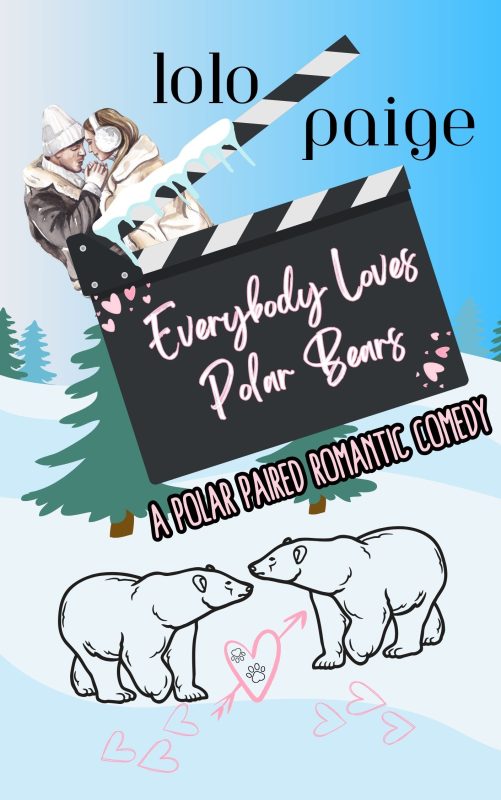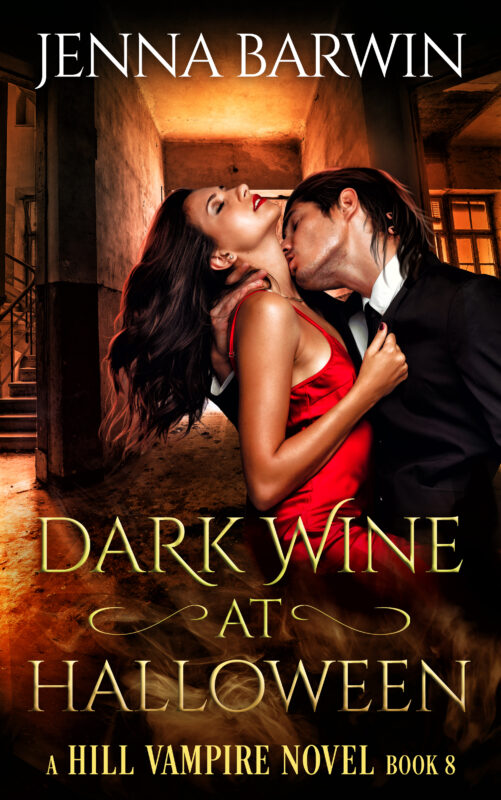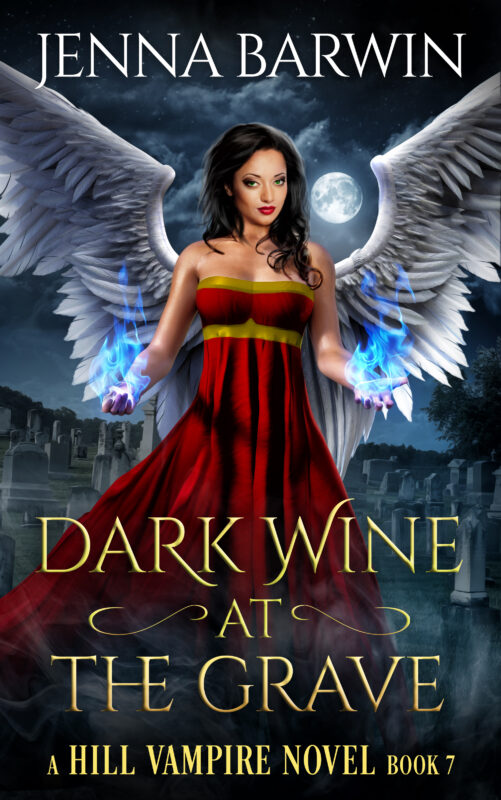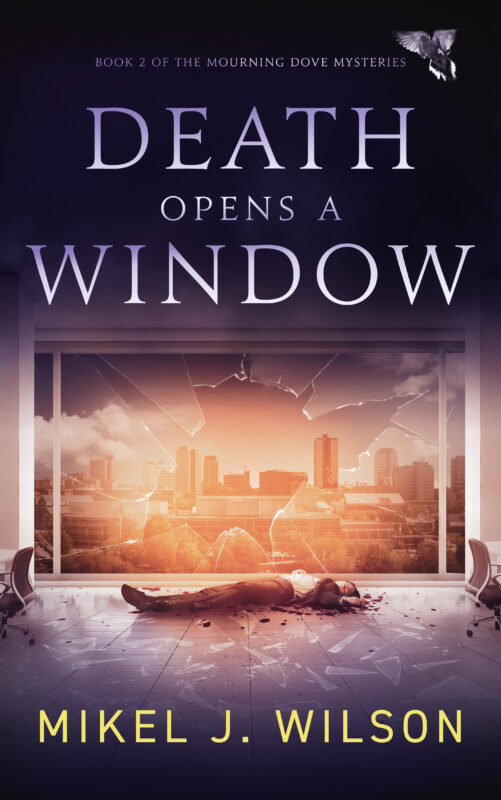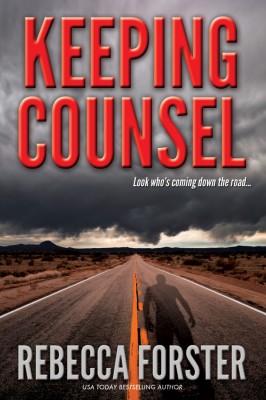e-maginings: Me and My Kindle
January 24, 2008 by A Slice of Orange in category Archives tagged as Amazon, e-books, e-maginings, Kindle, Linda McLaughlin, Lyndi LamontMy primary Christmas present is an Amazon Kindle e-book reader, and I love it. In fact, my Kindle and I are pretty much inseparable these days.
Those of you who know me, know I’m an avid e-book reader, and some of you may wonder why. I like the portability of the reader. Instead of an armload of books, I can carry my Kindle, which currently has 40+ books on it, plus assorted personal files, magazine issues, blogs and MP3 files. And 30% of the memory is still unused.
E-books help to unclutter your life: Since the books are stored on the hard drive of your computer until you’re ready to read them, storage is less of a problem than with print books.
With my aging eyes, I also like the fact that you can change the font size on an e-book reader. No more squinting to read the small print.
I’ve been an avid e-book reader for some years now. I’ve read e-books on my laptop, my RCA Germstar 1100, a PDA and a Pocket PC. I’ve enjoyed most of my readers (with the notable exception of the now-defunct Franklin eBookman), but the Kindle is rapidly becoming my favorite.
I’m amazed at how lightweight it is, much less than the comparably-sized RCA Gemstar 1100. The wireless is fast, unbelievably fast, so it’s really easy to buy from the Kindle store or download updates to magazine or blog subscription. I like being able to download a sample to read before deciding to buy a book, too. That’s a very nice feature. If you leave the wireless off most of the time, the battery life is excellent, and the device charges back up very quickly.
I thought I might miss the backlighting, and at times I do, but it’s also nice to be able to read in sunlight, particularly when traveling in the car. (Not when I’m driving, of course!)
I’m glad I waited for the Kindle instead of buying the Sony Reader because, for me, the Kindle is more useful and versatile. I already had a lot of books in unprotected Mobipocket format which can be read on the Kindle without any conversion. It’s easy to transfer files from your computer to the device using the USB cable.
The only real frustration I’ve had with it so far is that, while it will play MP3 music, it won’t play my MP3 podcasts. I can’t understand what the difference is beyond the fact that the podcasts in question are so much longer, about 45 minutes. They’re all MP3 files, so what the hey? Oh, well.
A common complaint of the Kindle is that it’s easy to hit the next page or previous page buttons by accident, but I figure once I get used to the device, that won’t happen so much any more.
Is this the “killer device” the e-book community has been waiting for?
Probably not, but the wireless connectivity alone makes it a huge step forward. The real problem remains the lack plethora of formats, so that’s a software problem that can’t be solved by new hardware. Chances for real standardization range from a best case scenario of years to a worst case scenario of never.
The only other downside is the $399.00 list price and the fact that the device is only available in the US. The price may eventually come down, but probably not anytime soon, since the Kindle has been “temporarily out of stock” almost since it was released. I ordered mine at the end of November and had to wait about two weeks to get. It may take even longer now. The fact that demand appears to be steady is a good sign for the future of the Kindle and e-books. 😀
If anyone has any questions about the Kindle, I’ll try to answer them.
Linda Mac / Lyndi Lamont
Advice to Myself as a Newbie Author
January 22, 2008 by A Slice of Orange in category Archives tagged as Advice to Myself as a Newbie Author, Jennifer Blakeby Shauna Roberts
http://ShaunaRoberts.blogspot.com
Today’s Guest: Jennifer Blake
Since publishing her first book at the age of twenty-seven, New York Times bestselling and award-winning author Jennifer Blake has gone on to pen more than sixty historical and contemporary romances. She brings the seductive passion of the South to her stories, reflecting her seventh-generation Louisiana heritage. Jennifer lives with her husband in northern Louisiana.
Jennifer, if you could travel back in time to before you were first published, what advice would you give yourself?
 1. Accept that the type of book sold to your first editor is what she will expect to see from you for subsequent contracts. Don’t change to a different time period, setting, or genre without prior consultation. Case in point: My first two book sales were to Fawcett Gold Medal for their Gothic romance program, and both had historical settings. Then a friend who had researched Hurricane Camille and written a portion of a contemporary mystery-suspense story around it asked that I collaborate with her and publish the book under my name with a 50/50 split of the proceeds. I rewrote her manuscript and submitted it. (This, sad to say, was before query letters and partial submissions.) It was rejected out of hand. A contemporary Gothic was not what Fawcett wanted or expected from me.
1. Accept that the type of book sold to your first editor is what she will expect to see from you for subsequent contracts. Don’t change to a different time period, setting, or genre without prior consultation. Case in point: My first two book sales were to Fawcett Gold Medal for their Gothic romance program, and both had historical settings. Then a friend who had researched Hurricane Camille and written a portion of a contemporary mystery-suspense story around it asked that I collaborate with her and publish the book under my name with a 50/50 split of the proceeds. I rewrote her manuscript and submitted it. (This, sad to say, was before query letters and partial submissions.) It was rejected out of hand. A contemporary Gothic was not what Fawcett wanted or expected from me.
The story was published later by Ace Books as Storm at Midnight under the pen name of Elizabeth Trehearne and now sells for $99.99 as a collector’s item due to its low print run. Still, it was a lesson learned the hard way.
2. Don’t assume that being a New York agent or editor automatically confers insight into what’s happening in the marketplace. A couple of years after I published my first book, Kathleen Woodiwiss came out with The Flame and the Flower. On reading it, I was enthralled. I immediately contacted my former agent suggesting that my next book be a historical romance. He replied, “Don’t waste your time. The historical romance is as dead as the dodo.â€
What I should have done was send him a copy of Woodiwiss’s book as an example of what I meant. Instead, I assumed he had some kind of inside information indicating there was no market for another such story. The fact was, he didn’t know a new genre was being born, one radically different from the older, male-oriented historical sagas he had in mind. As an avid reader scanning the shelves in the depths of country, I had a better idea of what was going on than he did while ensconced in his New York office. He—and much of the rest of the NY publishing community—didn’t catch up until early 1975 when I was suddenly asked to do a proposal for a historical romance after all.
3. Watch the market, read in the genre, and pay attention to your gut instinct concerning where it’s headed. In the early 1990s, I did in-depth research on a major Civil War campaign in Louisiana for a dramatic historical romance with that setting. When I sent the proposal to my editor, she asked to see something else, saying Civil War romances were a hard sell. Reluctantly, I gave her another story idea. If I’d insisted on doing my Civil War epic, it would have hit the shelves at the same time as Scarlett—and just as Kathryn Falk of Romantic Times Magazine was very kindly telling everyone that I should have been chosen to write this sequel to Margaret Mitchell’s Gone with the Wind.
4. Establish a story idea file and capture in it every single idea that comes your way. Stories are like spirits: They fade away if ignored, and you can never depend on them to drift back into your mind again.
 5. Don’t be intimidated by editors and agents because you think they operate on a higher, more sophisticated plane. They are just people who have worries and fears, hopes and dreams, wardrobe issues and bad hair days like the rest of us. Offer them the appreciation and cooperation that will make their lives easier, and they’ll do the same in return.
5. Don’t be intimidated by editors and agents because you think they operate on a higher, more sophisticated plane. They are just people who have worries and fears, hopes and dreams, wardrobe issues and bad hair days like the rest of us. Offer them the appreciation and cooperation that will make their lives easier, and they’ll do the same in return.
6. Never send an editor more than one book proposal at the time unless you’re prepared to write any story she chooses. Invariably, you’ll be stuck writing the story you liked least.
7. Invest in quality stationery and take the time to send thank you notes for any special consideration shown to you as a writer—for interviews, speaking gigs, book signings, appearances arranged for jobber events, an especially beautiful cover done by the art department, a great blurb written for your book, and so on. The art of the handwritten thank you note is so nearly dead that the novelty of the gesture will make it memorable.
8. Don’t let any of the irritations or disasters that come your way in publishing become personal. It’s a business and you should be professional about it. Though it may be highly satisfying to fire off a hot email or letter in response to some mangling of your work, blow to your career or meddling in your non-writing life, you will always regret it.
9. Nothing you write will ever be perfect; it’s an impossible goal. Do the best you can during the moment at hand, and that will be good enough.
10. Writing is an art for which you must have talent. It’s also a craft that’s learned by studying and endless, endless practice. Nothing you write is ever wasted; it always adds to your knowledge of how to draw people into the heart of your story, how to persuade them to turn the pages of your books. Don’t write just to sell, then, or because you think it’s an easy career. Write for the music of the words slipping through your mind. Write for the magic of being able to invite readers into the story world you’ve created, for the wonder of making them see what you see, hear what you hear, feel what you feel. Write for the joy.
✥✥✥✥✥
Visit Jennifer Blake’s Website at http://www.jenniferblake.com/ and her blog at http://jenniferblake.com/journal/. Her book Guarded Heart will be available February 1 at all major bookstores and can be ordered online from Amazon.com and Barnes & Noble.
Interested in learning more about Jennifer? An interview with her appears today at my blog, Shauna Roberts’ For Love of Words.
The Lone Writer: Rides the Information Superhighway
January 21, 2008 by A Slice of Orange in category Archives tagged as The Lone WriterI decided to blog an introduction to the newly overhauled OCCRWA website. Think of it as a mini-map to your chapter website. What’s new? you ask. Oh grasshopper, you have no idea…
First there is the new look. Whether you loved the black background or not, sometimes you have to shake things up a bit. We decided to stick with the OCC roots of orange and green. There may not be very many orange groves in the OC anymore but we’re sticking with it. Plus, our webdesigner managed to create an amazing fruit crate label for our logo. For more of her work check out www.AmberwingDesign.com
So what have I learned about webdesign? In the future I will make it a point not to ask three Type “A” personality individuals to agree on a site map. (The site map is the layout of the site, it organizes what drop down menu items go with each button). You would have thought we were planning a siege instead of a website. LOL.
Initially I was going to post a page by page summary here, of what is available on the site. Instead, I think it makes more sense for people to click around and see what they discover. The site is a work in progress and we’re still tweaking it but there is no substitute for individual exploration!
Have a lovely day and Happy Birthday to my dear friend Sabrina and (of course) Dr. Martin Luther King, Jr.
Once and Future Writer: Of resolutions and goals
January 19, 2008 by A Slice of Orange in category Archives tagged as Member At LargeAt a recent LERA meeting, the speaker handed out file cards. Told us to write down our goals for one month, six months, one year, and five years. Seemed like a great idea, get us to write down goals and really cement in our New Year resolution.
Then she collected them all back to keep. Oops.
Now it’s not just a goal I make to myself, and can fulfill or ignore as the spirit moves me. I’m 100% sure she’s going to be standing up at the front of the room next month reading off our goals, asking if we’ve met them, then asking why. In other words, a serious, buckle down and get it done goal.
Talk about motivation! Or would this be conflict? I’m motivated to avoid the conflict I would have to face by admitting I hadn’t managed to follow through on those goals. Works for me. And I mean really works for me. Instead of an obscure someday I now have a concrete do it by date. Amazing what difference a 3 X 5 card makes. Especially in someone else’s hands.
Which got me thinking about resolutions and goals and all the rest of what we do to make ourselves write, or to keep ourselves from writing. And I realized I was not giving myself the respect I give to other writers.
So, here’s a goal, in writing, and in front of most of my world. I am a writer. I matter as a writer, and I deserve respect from other writers but most of all from myself. I will give myself that respect, and make the effort to WRITE when I first sit down at the computer. Not check e-mail. Not format artwork. Write.
I deserve it. I AM a writer.
Happy writing.
Monica Henderson Stoner
No Whining!
January 18, 2008 by A Slice of Orange in category Writer on the Verge by Kate Carlisle tagged as Kate Carlisle, plot group, Writer on the VergeBy Kate Carlisle
Affiliate Links
A Slice of Orange is an affiliate with some of the booksellers listed on this website, including Barnes & Nobel, Books A Million, iBooks, Kobo, and Smashwords. This means A Slice of Orange may earn a small advertising fee from sales made through the links used on this website. There are reminders of these affiliate links on the pages for individual books.
Search A Slice of Orange
Find a Column
Archives
Featured Books
EVERYBODY LOVES POLAR BEARS
Expect the unexpected when it comes to love under the Aurora skies.
More info →DARK WINE AT THE GRAVE
Henry never thought he’d turn someone vampire. Especially someone who wasn’t his mate…
More info →Newsletter
Contributing Authors
Search A Slice of Orange
Find a Column
Archives
Authors in the Bookstore
- A. E. Decker
- A. J. Scudiere
- A.J. Sidransky
- Abby Collette
- Alanna Lucus
- Albert Marrin
- Alice Duncan
- Alina K. Field
- Alison Green Myers
- Andi Lawrencovna
- Andrew C Raiford
- Angela Pryce
- Aviva Vaughn
- Barbara Ankrum
- Bethlehem Writers Group, LLC
- Carol L. Wright
- Celeste Barclay
- Christina Alexandra
- Christopher D. Ochs
- Claire Davon
- Claire Naden
- Courtnee Turner Hoyle
- Courtney Annicchiarico
- D. Lieber
- Daniel V. Meier Jr.
- Debra Dixon
- Debra H. Goldstein
- Debra Holland
- Dee Ann Palmer
- Denise M. Colby
- Diane Benefiel
- Diane Sismour
- Dianna Sinovic
- DT Krippene
- E.B. Dawson
- Emilie Dallaire
- Emily Brightwell
- Emily PW Murphy
- Fae Rowen
- Faith L. Justice
- Frances Amati
- Geralyn Corcillo
- Glynnis Campbell
- Greg Jolley
- H. O. Charles
- Jaclyn Roché
- Jacqueline Diamond
- Janet Lynn and Will Zeilinger
- Jeff Baird
- Jenna Barwin
- Jenne Kern
- Jennifer D. Bokal
- Jennifer Lyon
- Jerome W. McFadden
- Jill Piscitello
- Jina Bacarr
- Jo A. Hiestand
- Jodi Bogert
- Jolina Petersheim
- Jonathan Maberry
- Joy Allyson
- Judy Duarte
- Justin Murphy
- Justine Davis
- Kat Martin
- Kidd Wadsworth
- Kitty Bucholtz
- Kristy Tate
- Larry Deibert
- Larry Hamilton
- Laura Drake
- Laurie Stevens
- Leslie Knowles
- Li-Ying Lundquist
- Linda Carroll-Bradd
- Linda Lappin
- Linda McLaughlin
- Linda O. Johnston
- Lisa Preston
- Lolo Paige
- Loran Holt
- Lyssa Kay Adams
- Madeline Ash
- Margarita Engle
- Marguerite Quantaine
- Marianne H. Donley
- Mary Castillo
- Maureen Klovers
- Megan Haskell
- Melanie Waterbury
- Melisa Rivero
- Melissa Chambers
- Melodie Winawer
- Meriam Wilhelm
- Mikel J. Wilson
- Mindy Neff
- Monica McCabe
- Nancy Brashear
- Neetu Malik
- Nikki Prince
- Once Upon Anthologies
- Paula Gail Benson
- Penny Reid
- Peter Barbour
- Priscilla Oliveras
- R. H. Kohno
- Rachel Hailey
- Ralph Hieb
- Ramcy Diek
- Ransom Stephens
- Rebecca Forster
- Renae Wrich
- Roxy Matthews
- Ryder Hunte Clancy
- Sally Paradysz
- Sheila Colón-Bagley
- Simone de Muñoz
- Sophie Barnes
- Susan Lynn Meyer
- Susan Squires
- T. D. Fox
- Tara C. Allred
- Tara Lain
- Tari Lynn Jewett
- Terri Osburn
- Tracy Reed
- Vera Jane Cook
- Vicki Crum
- Writing Something Romantic
Affiliate Links
A Slice of Orange is an affiliate with some of the booksellers listed on this website, including Barnes & Nobel, Books A Million, iBooks, Kobo, and Smashwords. This means A Slice of Orange may earn a small advertising fee from sales made through the links used on this website. There are reminders of these affiliate links on the pages for individual books.





